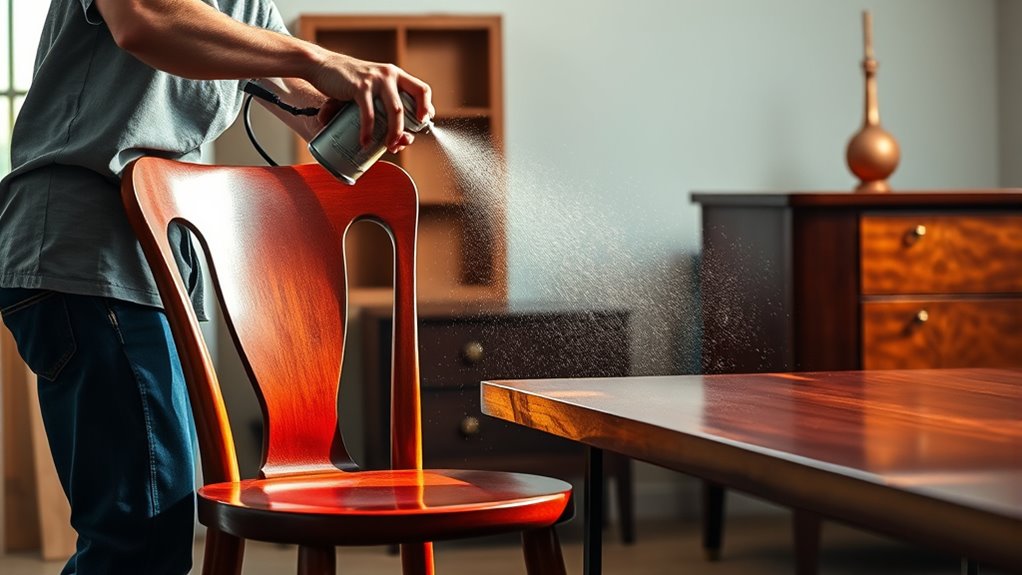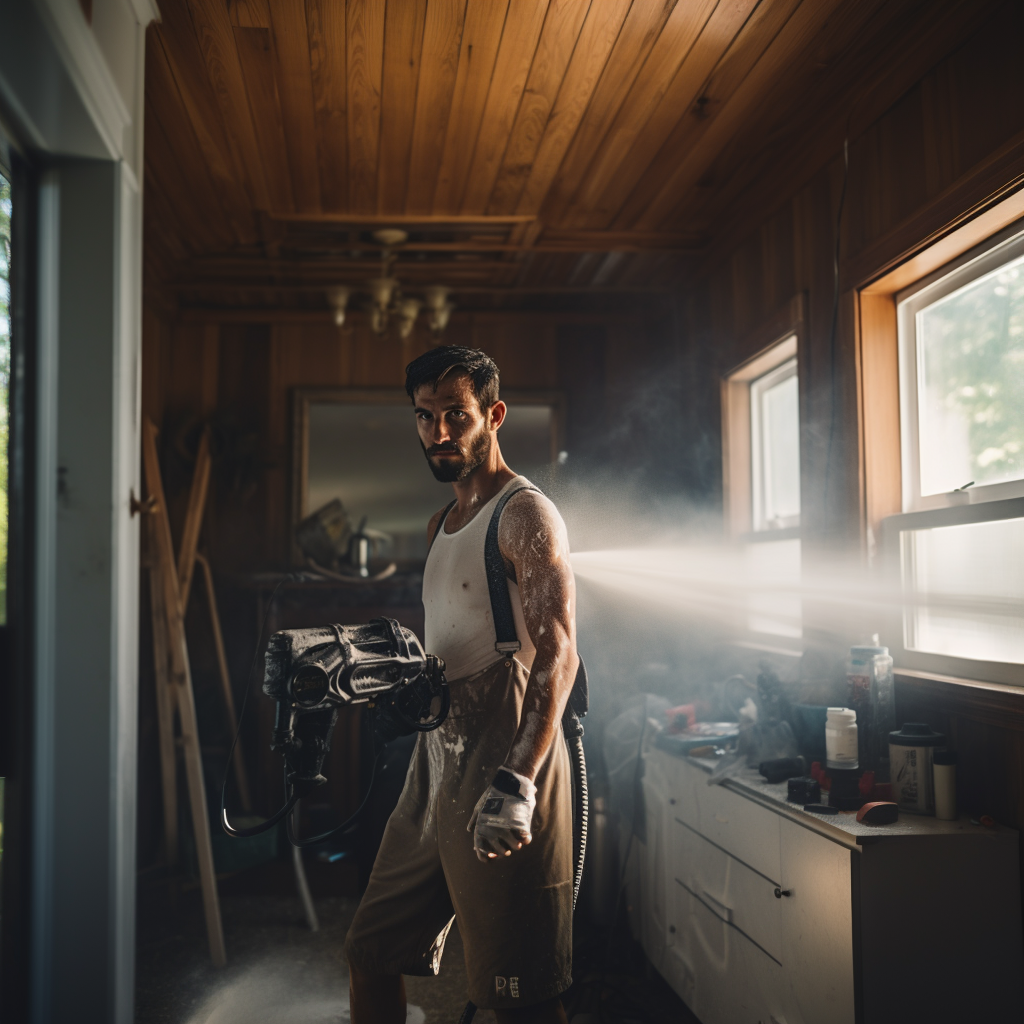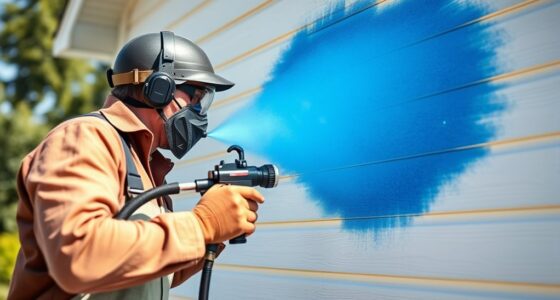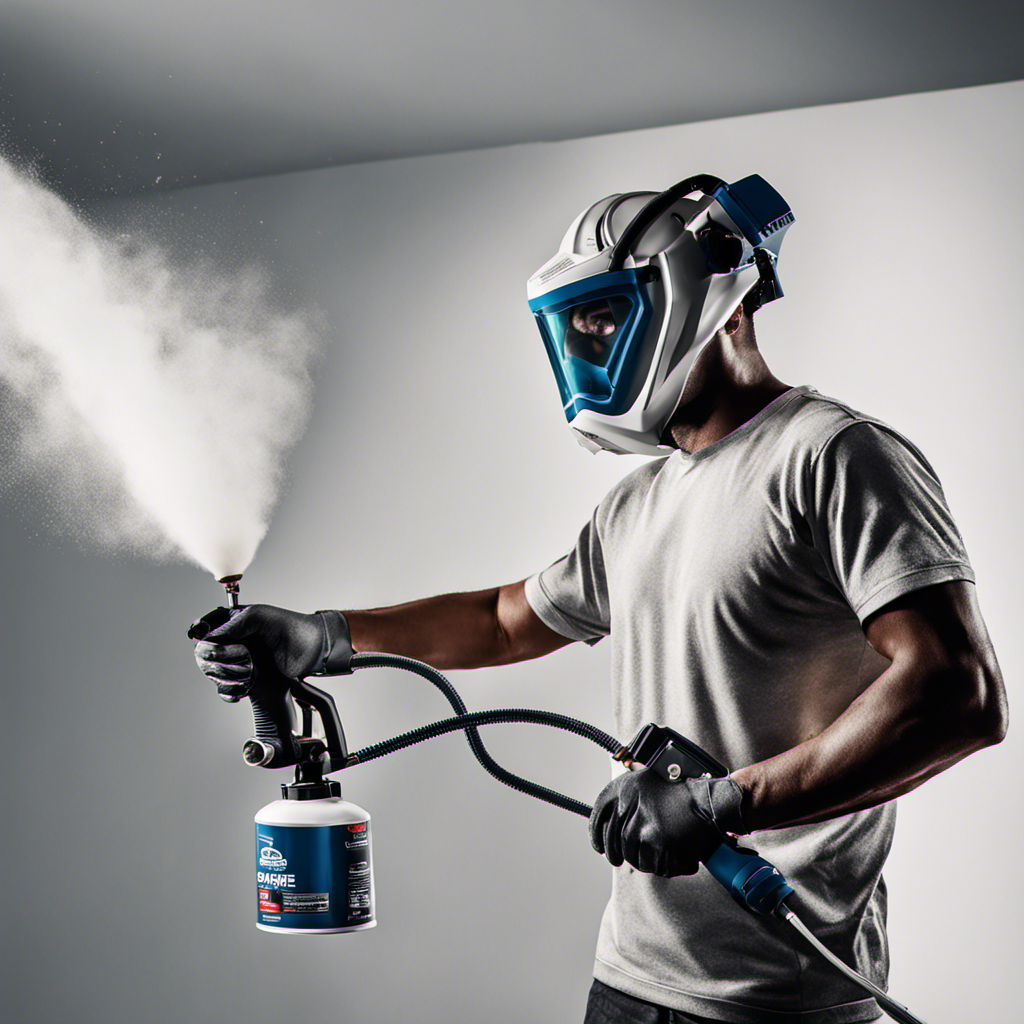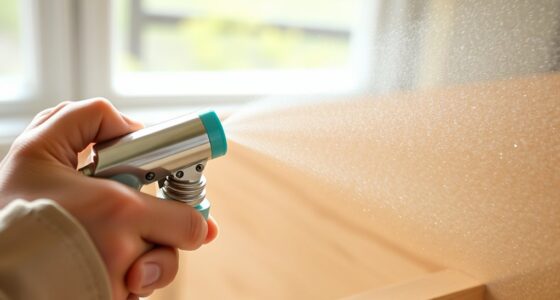To spray furniture like chairs, tables, and dressers, start by choosing the right color and preparing the surface with cleaning and sanding. Use a quality spray gun or aerosol spray, holding it 6-12 inches from the piece, and apply multiple thin coats with smooth, overlapping strokes. Maintain a steady hand and consistent technique to avoid drips and streaks. If you want to master these tips and create a professional finish, keep exploring for more insights.
Key Takeaways
- Properly clean and sand furniture surfaces to ensure optimal paint adhesion and a smooth finish.
- Choose spray paints designed for furniture with fine mist and quick drying properties.
- Maintain a consistent spray distance of 6-12 inches for even coverage and prevent drips.
- Use multiple thin coats with overlapping strokes to achieve a durable, professional-looking finish.
- Practice spraying techniques on scrap or hidden areas to control flow, pattern, and color matching.
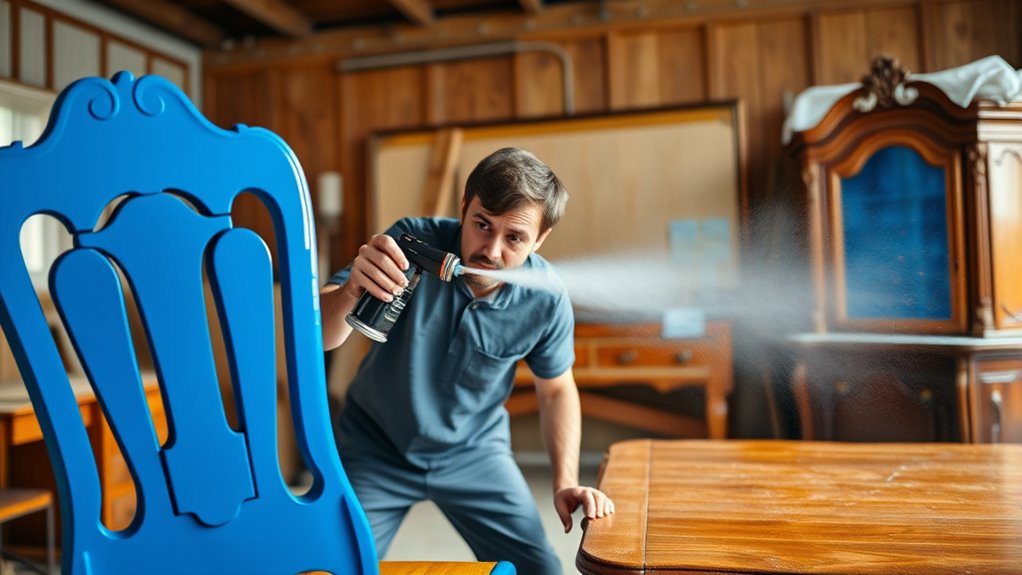
Have you ever considered spraying furniture as a quick and efficient way to refresh its look? It’s an excellent method to give chairs, tables, and dressers a new lease on life without the mess and time of traditional painting. When you decide to spray furniture, you’ll want to focus on a few key aspects to get professional-looking results. One of the most important is color matching. Picking the right shade ensures your furniture blends seamlessly with your décor or makes a bold statement, depending on your preference. Before you start, take samples or small sections of your furniture to a paint store or match them digitally to find the perfect hue. This way, your finished piece will look cohesive and intentional.
Using spray equipment is central to achieving a smooth, even finish. Modern spray guns and aerosol sprays are designed to make the process straightforward, even for beginners. You don’t need to be an expert to get professional results, but understanding how to use spray equipment correctly makes all the difference. Start by cleaning and sanding your furniture thoroughly. This creates a surface that the spray paint can adhere to better and results in a more polished appearance. Once prepared, fill your spray gun or shake your aerosol can well. Hold the spray equipment at the proper distance—usually around 6 to 12 inches from the surface—and use smooth, overlapping strokes. Keep your hand steady, and avoid applying too much paint in one pass, as this can cause drips or an uneven finish. Additionally, controlling the contrast ratio during spraying can help you achieve more dynamic and visually appealing results, especially if you’re aiming for a specific aesthetic or match to existing decor.
When choosing your paint, look for products specifically formulated for furniture or wood surfaces. These often have better adhesion, durability, and finish quality. If you’re using spray equipment, opt for spray paints that offer a fine mist and quick drying time. Practice on a scrap piece or a hidden part of the furniture to get a feel for the spray pattern and flow. Consistent application is key to avoiding streaks or blotches. Also, consider applying multiple thin coats instead of one thick layer; this helps achieve a more even and durable finish.
Frequently Asked Questions
What Safety Precautions Are Necessary When Spraying Furniture?
When spraying furniture, you need to wear protective gear like gloves, goggles, and a mask to avoid inhaling fumes or getting chemicals on your skin. Make certain your spray area is well-ventilated by opening windows and using fans. This prevents fumes from building up and reduces health risks. Always follow manufacturer instructions and work in a safe, clean environment to protect yourself and achieve the best finish.
How Do I Choose the Right Spray Paint for Furniture?
Did you know that choosing the right spray paint can extend your furniture’s lifespan by up to 50%? To pick the best spray paint, consider the desired paint finish—whether matte, gloss, or satin—and match it to your style. Also, think about color selection carefully; test small areas first to see how the color looks when dry. This guarantees a smooth, durable finish that enhances your furniture’s look.
Can I Spray Over Existing Finishes or Must I Strip First?
You can spray over existing finish, but it’s best to lightly sand the surface first to guarantee good adhesion. If the existing finish is peeling or glossy, you might need to strip it to create a smooth, clean surface. Skipping this step can lead to uneven paint or chipping later. Always clean the furniture thoroughly after sanding or stripping to remove dust and grease before spraying.
What Tools Are Best for Achieving a Smooth Spray Finish?
Did you know that using the right spray gun can cut your finishing time in half? For a smooth spray finish, you should choose a spray gun with adjustable nozzle sizes, ideally 1.3mm to 1.5mm for furniture. This allows you to control paint flow and achieve an even coat. Proper spray gun selection and nozzle size choices give you a professional look with minimal runs or uneven spots.
How Long Should I Wait Before Using the Sprayed Furniture?
You should wait at least 24 hours before using your sprayed furniture, but drying time can vary based on the type of paint or finish used. The curing period may take up to 30 days for the finish to fully harden and reach maximum durability. During this time, avoid heavy use or placing objects on the surface. Patience guarantees a smooth, lasting finish that looks great and resists damage.
Conclusion
Now that you know how to spray furniture, you can transform chairs, tables, and dressers with confidence, precision, and care. You’ll enjoy giving new life to old pieces, creating beautiful finishes, and achieving professional results. Whether you’re refining a single item or revamping an entire room, remember to prep, spray, and finish with patience. Embrace the process, enjoy the transformation, and take pride in your work—because every piece you spray becomes a reflection of your skill, creativity, and passion.
Franz came aboard the Paint Sprayer Zone team with a background in both journalism and home renovation. His articulate writing style, combined with a passion for DIY projects, makes him an invaluable asset. Franz has a knack for breaking down technical jargon into easy-to-understand content, ensuring that even the most novice of readers can grasp the complexities of paint sprayers.
